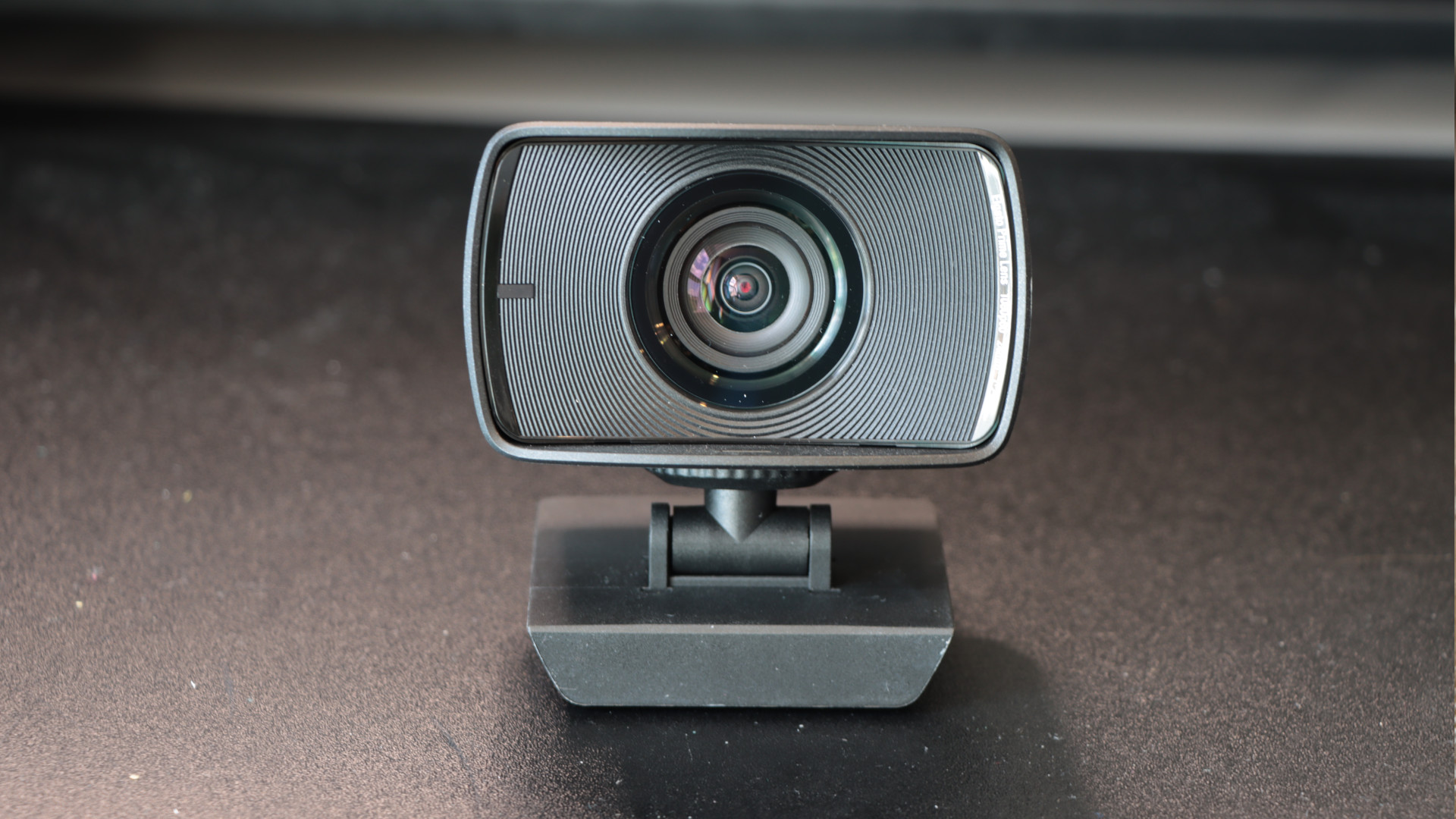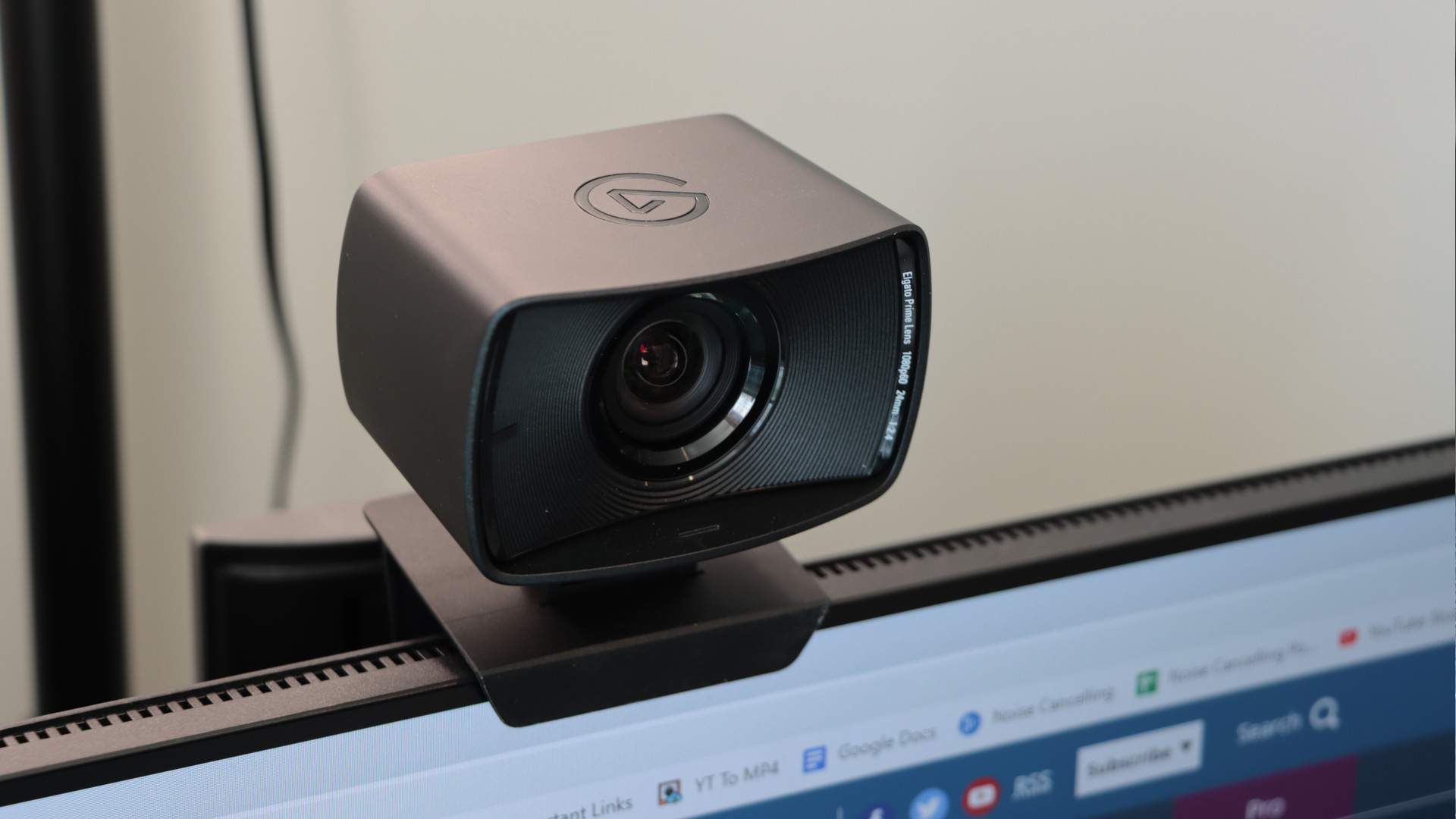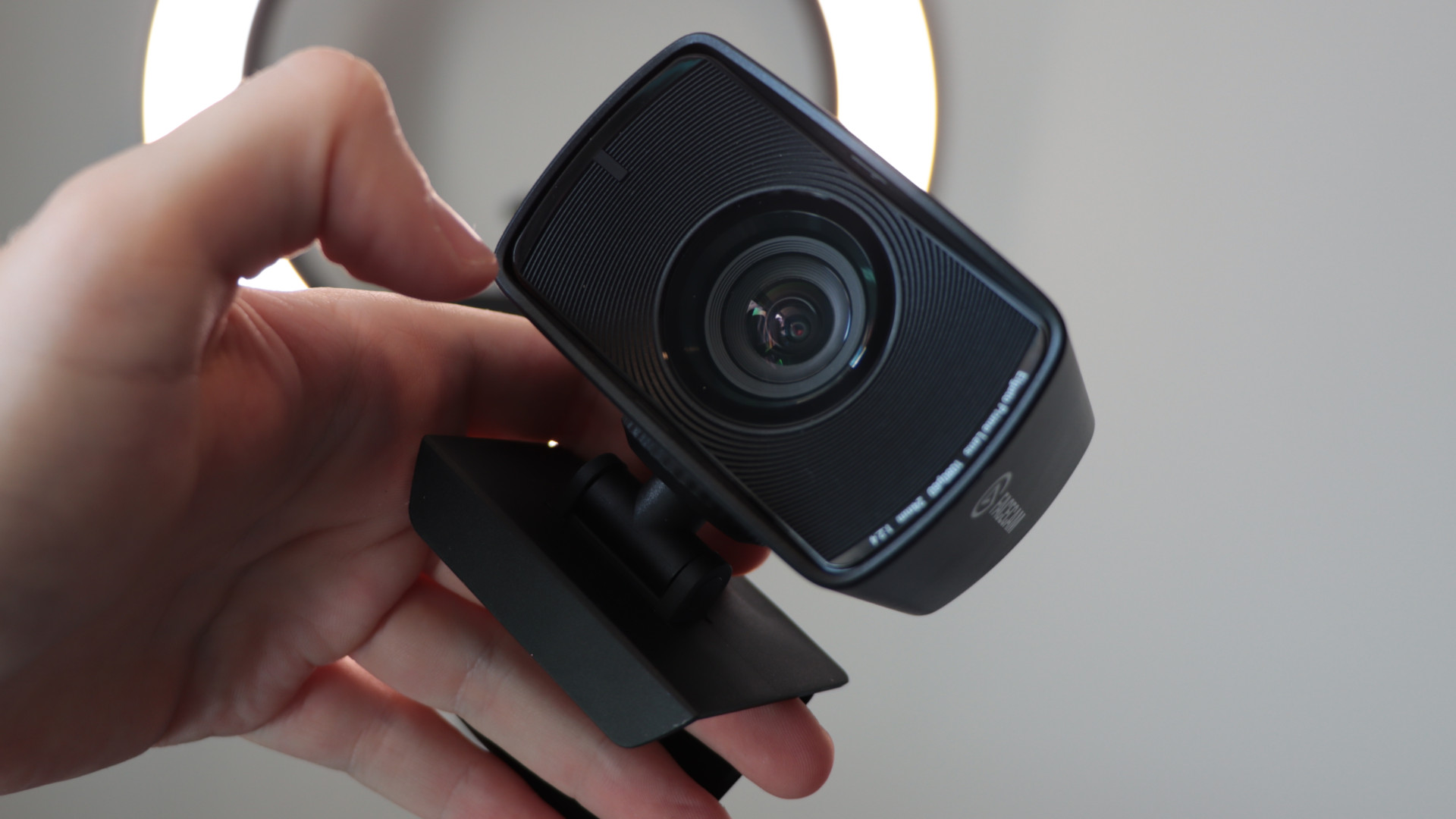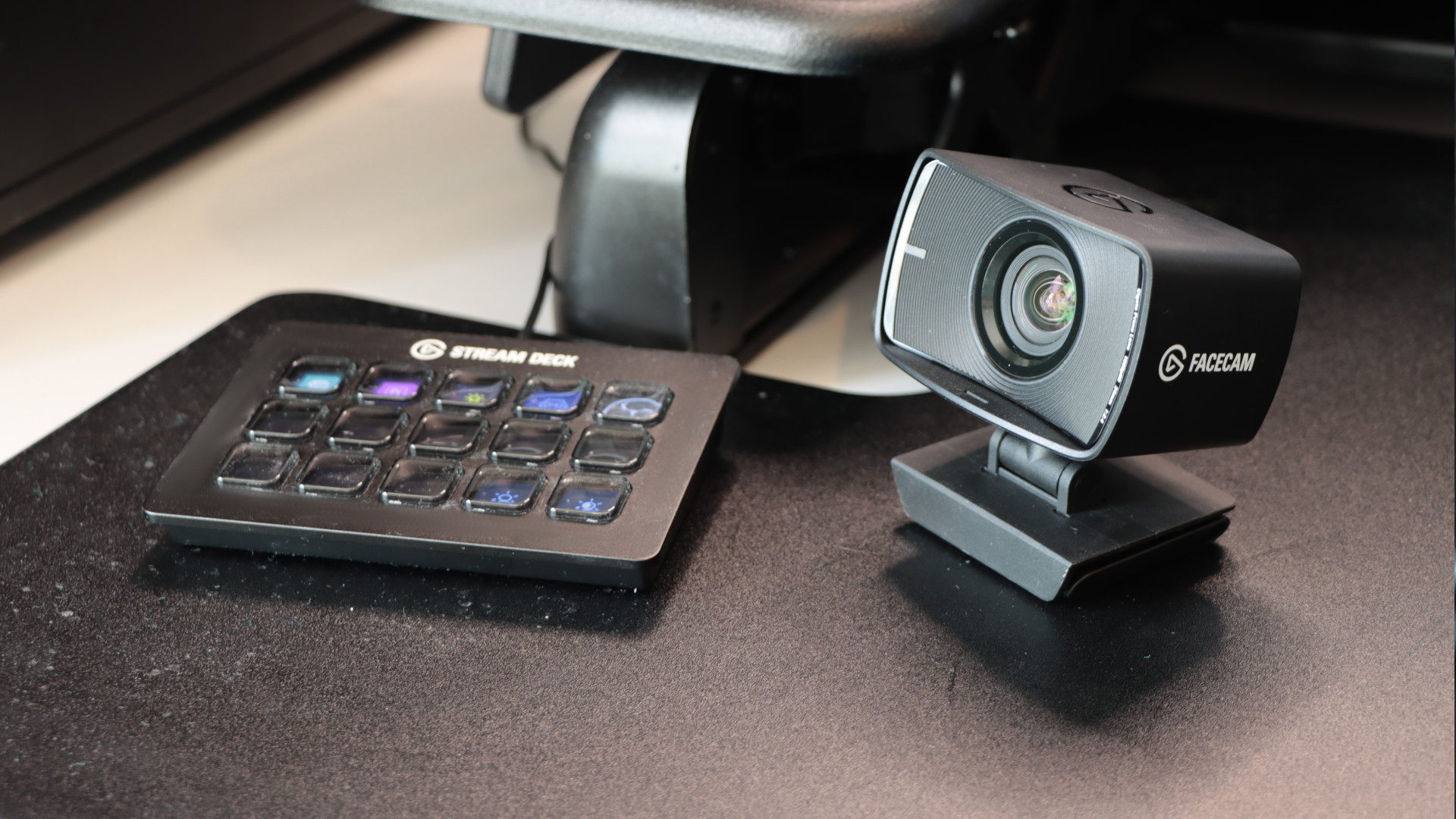Elgato Facecam
Two-minute review
Elgato is well known for designing products with streamers and content creators in mind, so it was always a little strange that it didn’t offer a dedicated webcam. Well, that gap has now been filled with the Elgato Facecam, a full HD 1080p camera that sits between the Epocam mobile app (that turns your phone into a streaming camera) and the Cam Link 4K.
The Facecam goes on sale July 16 for $199.99 / £189.99 / €199.99 and Elgato has informed us that the Facecam won’t be made available to Australia or Asia yet, but it’s expected to launch in those regions by the end of 2021
As mentioned, the Facecam sits neatly in the middle of the Elgato product family for affordability and general performance. If you’re looking for a bargain then the Cam Link 4K is actually a cheaper investment at $129.99 (£119.99, AU$249), but it’s worth noting that you need to buy a separate camera to use with that particular piece of kit, and the 1080p resolution is still capped at 60 frames-per-second.
Resolution and framerate are the most important distinctions when stacking the Facecam against some of the best webcams on the market, and where most standard webcams stick to a maximum of 1080p at 30fps, the Facecam has bumped the framerate up to 60fps just like the Logitech Streamcam and the Razer Kiyo Pro.
Framerate is what gives footage that ‘buttery smooth’ playback, and as such is often prioritized over the resolution by streamers because the actual camera window being broadcast is much smaller than other types of media. This isn’t to say that 4K video doesn’t have its place, but for gamers and commentators especially, that bump to 60fps really helps to enhance the quality of a stream.

Here are the specifications for the Elgato Facecam:
Connection type: USB-A 3.0, type C
Focus Type: Fixed
Focal length: 30cm - 120cm
Video Resolution: 1080p at 60 fps max
Microphone: No
Image Quality Settings Customization: Yes
Diagonal Field of View (FOV): 82° (diagonal)
Mounting Options: L-shape joint, tripod
There are a few noteworthy features that make the Facecam impressive outside of just framerates too. A webcams sensor can make or break the product and is often the failing of cheaper, brandless products on Amazon, but Elgato has ensured you’re getting something reliably high quality by including a Sony STARVIS CMOS sensor in the device.
Essentially, this is a sensor typically used in high-quality security cameras that aids in low-light filming environments, which can massively reduce noise - that grainy looking feedback you see when a webcam’s subject isn’t well lit.
The Facecam also has eight built-in lenses that each supposedly serve a different purpose. We've listed the alledged benefits to having these different lenses below.
- Aspherical Surface: Maximizes image perimeter sharpness
- Low Dispersion Glass: Reduces chromatic aberration, enhances contrast, tonality and sharpness. Constant transmittance over the entire color spectrum. Neutral colors, no tint, no color distortion
- Eighteen Anti-Reflective Coatings: Improves transmittance, prevents lens flare, and preserves image detail
- IR Cut Filter: Blocks infrared light from disrupting the sensor

Elgato’s offering stacks up incredibly well against its rivals in the streaming webcam market. When we tested all three devices, the Facecam is noticeably more saturated and vibrant at default settings when compared to the other two webcams, though this is something usually manually altered by content creators to make themselves more of a focus during a broadcast. If the vibrancy isn’t to your taste then Elgato has provided some editing software for the Facecam to make some adjustments.
And wow, the Camera Hub software is a blessing. While the hardware was impressive enough, the alterations that can be made in this software blow the competition out of the water.
Where the Logitech Capture software offers too few editing options and the Razer Synapse software has a buggy reputation to contend with, the Camera Hub is easy to use and feature-packed, providing a full range of options to change the contrast, saturation, shutter speed, field-of-view (with a handy slider rather than fixed options), and more.
The inspiration taken from DLSR cameras already used in streaming is very apparent with the Camera Hub program. You also have the option to reduce the quality of your broadcast down should you need to do so manually, with the lowest available setting 540p at 30fps.

If you want more detailed edits then Elgato has included an intuitive ISO reader. ISO stands for “International Organization for Standardization”, which in very simple terms means that it controls the exposure levels of a camera. The higher the ISO, the brighter the image.
This is a feature that could allow streamers with studio lighting (or indeed Elgato’s own Key or Ring lights for the full ecosystem experience) to adjust and personalize their setup with a more professional eye. Best of all, you can save your adjustments as a new default setting to the webcams onboard flash memory so once you’ve tweaked your footage to perfection you don’t need to mess around with it again.
There are a few features that Elgato opted to omit from the Facecam that might sway you in favor of its rivals, but frankly, we’re with Elgato on this. Firstly, there isn’t a built-in auto-focus. Most streamers opt to use a fixed focus anyway as autofocus can be a little sensitive, causing footage to look messy and unprofessional. Given the autofocus on both the Razer Kiyo pro and Logitech Streamcam can be a tad frustrating, and this is a product optimized with streamers in mind, it makes sense to bin off the feature entirely.

Another is that the Facecam doesn’t have an onboard microphone. This is another niche issue faced by streamers if their streaming software like OBS or Streamlabs accidentally switches to the microphone on their webcam or laptop, resulting in low-quality audio. It’s difficult to get broadcasting quality audio from a webcam, and Elgato admits that it “expect creators and professionals to use a dedicated microphone”. While you might not have access to an XLR or USB microphone, a gaming headset mic is usually infinitely better than one built into a webcam.
There are actually a few other advantages for streamers who also own a Stream Deck in the form of a plugin that makes video alterations possible at the push of a button. You can zoom in to your unimpressed face when some kid snipes you for a reaction shot, or change the lighting of the room to a different pre-programmed setting. Given the Stream Deck is already a highly coveted product in the streaming community, Elgato has really knocked it out of the park by ensuring its ecosystem communicates effortlessly.
In short, the Elgato Facecam might be fresh-faced but it's already stacked itself as a great choice for streamers and content creators who aren't ready to jump into an expensive DSLR camera purchase. While it's still a pricey investment, it's fairly priced against its competitors and better equipped at dealing with niche requirements that live public broadcasting demands. If you're looking for a webcam to start a Twitch channel and you have the cash to spare, the Facecam is our hands-down recommendation right now.
Buy if...
You want the best streaming webcam on the market
Yes, Razer, Dell and Logitech also offer some compelling products but the Facecam definitely wins when it comes to how well it's been designed specifically for streamers rather than typical webcam use.
You like having mounting options
The Facecam comes with a removable claw type mount, but with a traditional thread that can be used with a standard tripod. This means you can stick your webcam wherever the shot looks best rather than just atop your monitor.
You already own kit from Elgato
A great benefit to the Facecam is how well it fits into the existing Elgato ecosystem, so if you own a Streamdeck (and any other accessories) then you'll see more benefits buying this than other products.

Don't buy if...
You don't want to buy a microphone
While we agree with Elgato's decision to not include a built-in mic or autofocus, this might be a deal-breaker for you if you hate using headset mics or don't want the additional cost of buying a USB microphone.
You need something cheaper
It's a great product, but not everyone has $200 to spend on a webcam. There are cheaper options available from other reputable brands, but it's worth remembering you won't get the same quality level.
You already own a decent mirrorless camera
Another financial point here but if you already own a camera that would be suitable for streaming with then buying yourself a Cam Link 4K or even a Capture Card will be a better choice for overall video quality.
- Here's how to get the best streaming setup
0 comments:
Post a Comment